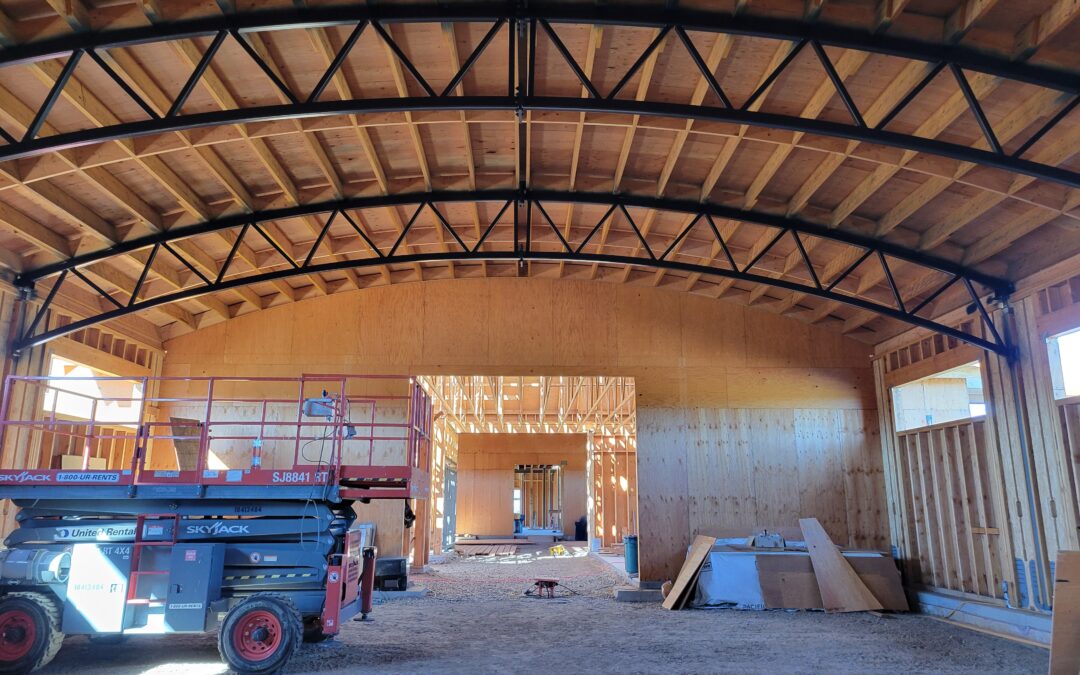Where Form Meets Function with Purpose and Beauty
In the realm of architecture, a paradigm shift is underway, embracing the philosophy of humanism in building design. Hybrid buildings, epitomized by the innovative wood-steel systems like those from Miracle Truss Buildings, are leading the charge. This blog explores the harmonious convergence of function and beauty, where these structures not only provide abundant use value but also contribute to the emotional appeal and well-being of neighborhoods and communities.
- Embracing Flexibility and Adaptability:
Humanism in building design starts with the recognition that communities evolve. Hybrid buildings, known for their flexibility, resilience and adaptability, effortlessly respond to changing needs. Miracle Truss Buildings, with their customizable designs, provide a canvas for communities to shape their spaces according to their unique identities and growing requirements.
- Simplicity in Design, Complexity in Purpose:
The beauty of human-centric design lies in its simplicity. Hybrid buildings achieve this delicate balance, offering straightforward designs that belie the complexity of their purpose. By seamlessly integrating simplicity with functionality, these structures become more than mere edifices; they become integral components of a community’s daily life.
- Beyond Use Value: Creating Emotional Connections:
While the use value of buildings is crucial, humanism in design goes beyond mere functionality. Hybrid buildings, through their aesthetic appeal and thoughtful layouts, create emotional connections with the community. Miracle Truss Buildings, with their wood-steel hybrid system, combine strength and elegance, fostering a sense of pride and connection among residents.
- Comfortable Spaces for Well-being:
Humanism recognizes the impact of the built environment on individual well-being. Hybrid buildings prioritize comfort, offering spaces that enhance the quality of life. From energy-efficient designs using environmentally friendly materials like Expanded Polystyrene (Miracle) boards, to providing clear span spaces, allowing for ample natural light, these structures prioritize the physical and emotional well-being of those who inhabit them.
- Organic Integration with Neighborhoods:
Rather than imposing themselves on the landscape, hybrid buildings can easily and affordably organically integrate with the surrounding neighborhoods. Miracle Truss Buildings, with their simply customizable exteriors, allow for designs that complement the existing architectural fabric. This approach fosters a sense of unity and continuity, creating a harmonious blend between old and new.
- Community-Centric Approach:
Humanism in building design is inherently community-centric. Hybrid buildings facilitate community interaction by providing spaces that encourage social engagement. Whether it’s a communal gathering area or a multipurpose space, Miracle Truss Buildings can be tailored to support the social fabric of a neighborhood.
- Celebrating Diversity in Design:
One size does not fit all in a diverse community. Humanism celebrates this diversity, and hybrid buildings follow suit. Miracle Truss Buildings offer a near infinite range of design options, allowing communities to express their unique identities through architecture that reflects their values and aspirations.
Conclusion: In the era of humanism in building design, hybrid structures are at the forefront of creating spaces that go beyond utilitarian purposes. Miracle Truss Buildings exemplify this philosophy, where form meets function with purpose and beauty. By prioritizing flexibility, adaptability, resilience, simplicity, and a community-centric approach, these buildings become not just structures but integral contributors to sustainable well-being and the identity of the neighborhoods they inhabit.



